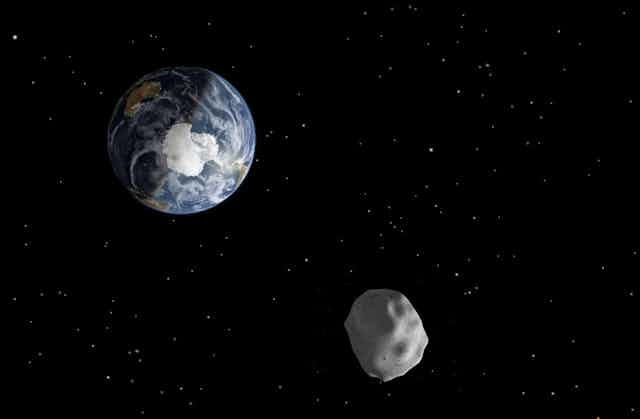One of the most exciting things about science is the detective work, and never was this more the case than Friday.
Within an hour or so of the event, almost everyone had seen the dramatic footage of the meteor over Russia. With the fly-by of another asteroid 2012 DA14 due only hours later, the obvious initial reaction was to draw a link between these two chunks of space rock.
Confronted with conflicting reports, instant internet conspiracies, and a media clamouring for information, the world’s scientific community sprang into action.
The first task was the easiest: determining whether the two asteroids were somehow connected. 2012 DA14 was coming from the south: indeed, Australia was well placed to observe it in the early hours of Saturday morning.
In Chelyabinsk, all of the videos show the meteor entering Earth’s atmosphere to the left of the rising sun. This meant that its origin – often referred to as the event radiant – was in the northeast.
While the exact location of the radiant is difficult to pin down, there’s one thing of which we can be sure: the two asteroids were coming from different directions!
This is apart from the fact that 2012 DA14 was more than 500,000 kilometres away at the time of the Russian meteor. The chances of the two events being related are therefore next to zero.
The next and more difficult task was to estimate the Russian object’s size.
Here a lot of assumptions need to be made: in particular the angle of the meteor’s trajectory and the impact velocity. Without any meteor fragments, its composition could only be guessed (stony, since that’s what most of them are made of).
The biggest aids in determining the size were large number of videos taken including audio. Despite the uncertainty surrounding the location of those who took the videos, a group at the Sodankylä Geophysical Observatory estimated the size to be between 10 and 20 metres across.
Some hours later, on Friday evening US-time, NASA’s Asteroid and Comet Watch revised this to 17 metres. They estimated that the amount of energy released when the meteor exploded was around 30 times that of the nuclear bomb dropped on Hiroshima.
Thankfully the explosion occurred around 20-to-30km above Earth’s surface! And unlike a nuclear explosion, there will be no significant radiation effects.
Amid all the drama of shock waves, injuries and damaged buildings, 2012 DA14 sailed sedately by early on Saturday morning (Australian time). Amateur astronomers pointed their telescopes along its expected path and, sure enough, there it was.
Australian astronomers at the newly-reopened Siding Spring Observatory also turned the 3.9 metre Anglo-Australian Telescope to watch the asteroid at dusk (AEST) on Friday. Their resulting video (see below) is striking: in two and half minutes, 2012 DA14 travels approximately 1,200km through space.
(Video credit: Lee Spitler, Andy Green and Steve Chapman at the Australian Astronomical Observatory for capturing the footage; Angel Lopez-Sanchez as the author of the video.)
As I commented on Friday, these two asteroids provide a stark reminder of how vulnerable we are and why we need to monitor the skies very closely for potentially larger objects.

